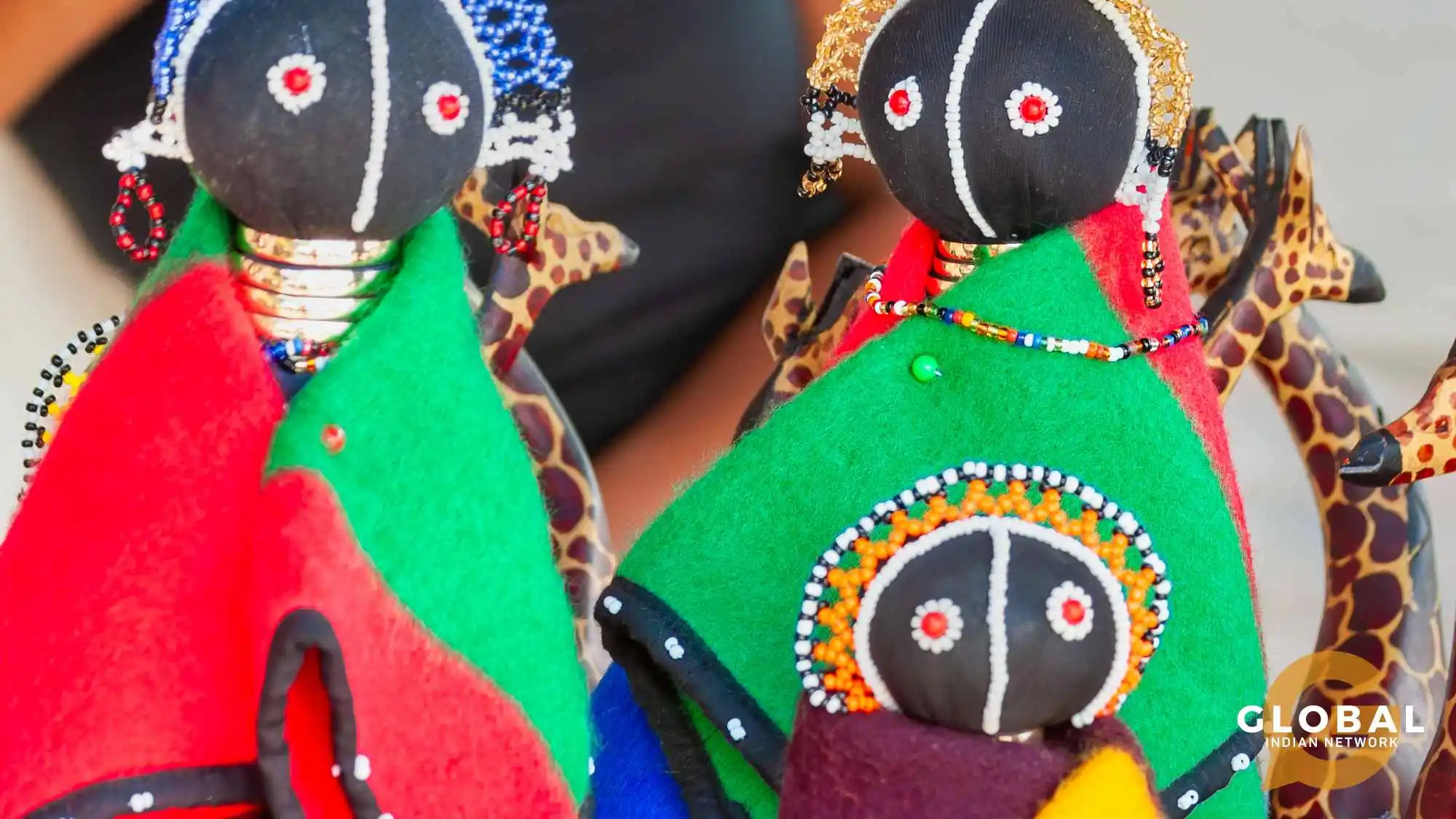Get ready to embark on an enchanting journey into the heart of South Africa as we delve into 8 Fascinating South African Myths and Legends. This article is your portal to a world of captivating stories woven into the rich tapestry of South African culture. Join us as we uncover the magic, mystery, and wisdom of these ancient narratives, revealing a cultural treasure trove that helps you know everything about this remarkable country. Let’s dive in and explore the magic together!
Table of Contents
Culture of South Africa
South African culture is an intricate tapestry of diverse ethnic groups, languages, traditions, and customs, reflecting the nation’s complex history and vibrant heritage. It encompasses a rich blend of indigenous African cultures, such as Zulu, Xhosa, and Sotho, alongside people from different places of the world, and more recent global trends.
South Africa’s cultural diversity is celebrated through music, dance, art, and cuisine, with the country being famous for its unique musical styles like jazz and traditional instruments like the marimba. Key elements of South African culture include a profound respect for elders, the spirit of Ubuntu (the belief in interconnectedness and shared humanity), and a strong emphasis on communal values and family bonds. South African culture reflects a resilient and diverse nation united by its commitment to inclusivity, creativity, and a sense of belonging.
Religious Beliefs
South Africa is a diverse nation with many religious beliefs and practices. The types of gods worshipped in South Africa vary among cultural and religious groups. Here are some of the gods and deities worshipped in the country:
- Traditional African Deities: Many indigenous African cultures in South Africa worship various ancestral and natural spirits. These deities are often associated with the elements, animals, and ancestors. For example, the Zulu people may worship Thixo, the supreme being, and various ancestral spirits.
- Christian God: Christianity is one of the most widely practised religions in South Africa. Christians worship the one God as described in the Bible, and there are various Christian denominations in the country, including Protestant, Catholic, and Orthodox branches.
- Hindu Deities: South Africa has a significant Indian population, and Hinduism is one of the major religions in this community. Hindus worship a pantheon of gods and goddesses, including Brahma, Vishnu, Shiva, Lakshmi, and Durga.
- Islamic God (Allah): The Muslim community in South Africa practices Islam and worships Allah as the one and only God. Mosques are places of worship for Muslims in the country.
- Judaism: A small Jewish community exists in South Africa, and they worship the God of Abraham, Isaac, and Jacob. They follow the teachings of the Torah and worship in synagogues.
- Buddhist Deities: There is a small Buddhist community in South Africa that practices Buddhism and worships various Buddhas, such as Siddhartha Gautama (the historical Buddha) and other celestial Buddhas and Bodhisattvas.
- New Religious Movements: South Africa, like many countries, has various new religious movements, some of which have unique belief systems and deities or spiritual figures.
It’s essential to recognize the incredible diversity of beliefs and practices in South Africa, which reflects the country’s multicultural and multi-religious society. The coexistence of these various belief systems is an integral part of South Africa’s cultural and religious landscape.
Religious Monuments
South Africa boasts a variety of religious monuments that reflect the country’s diverse spiritual and cultural landscape. Notable religious monuments include:
- Huguenot Monument: Located in Franschhoek, Western Cape, this monument pays tribute to the French Huguenots who settled in South Africa in the late 17th century. It serves as a symbol of religious freedom and tolerance.
- Voortrekker Monument: Situated in Pretoria, Gauteng, this massive granite monument commemorates the Afrikaner pioneers, or Voortrekkers, who ventured into the interior of South Africa in the 1830s. The monument has historical and cultural significance.
- Grey Street Mosque: In Durban, KwaZulu-Natal, this striking mosque, also known as Juma Masjid, is an architectural gem and one of the largest mosques in the Southern Hemisphere. It is a prominent symbol of the Muslim community’s presence in South Africa.
- Nizamiye Mosque: Located in Midrand, Gauteng, this Turkish-inspired mosque is known for its intricate and exquisite architecture. It showcases the diversity of Islamic traditions in South Africa.
- Shree Sanathan Hindu Temple: Situated in Durban, this Hindu temple is an architectural masterpiece adorned with intricate carvings and vibrant colours. It’s a significant place of worship for the South African Hindu community.
- Mount Zion Church: This church, located in the Moravian mission village of Mamre, Western Cape, is a historical site dating back to the 19th century. It represents the early Christian mission work in the Cape Colony.
- Great Synagogue: Situated in Cape Town, this historic synagogue is a beautiful architectural landmark and serves as a centre for the Jewish community in South Africa.
These religious monuments not only hold spiritual and cultural significance for their respective communities but also provide insights into South Africa’s rich and diverse religious history. They stand as testaments to the country’s commitment to religious freedom, tolerance, and the preservation of its cultural heritage.
8 Fascinating South African Myths and Legends
South Africa is a land rich in folklore and traditions. Here are eight fascinating South African myths and African legends, each with its unique story and significance:
- The Creation of the Rainbow: According to Zulu mythology, the goddess Unkulunkulu created the first man and woman, and their tears mixed with the soil to create the first rainbow. The rainbow serpent, known as Inkanyamba, is revered as a symbol of creation and fertility.
- The Story of the Sun and the Moon: This Xhosa legend tells of a time when the Sun and the Moon were married but lived separately. After a series of events and celestial battles, they are eventually brought together by the hare, a prominent character in South African folklore. This myth reflects the intricate relationship between the Sun and the Moon and the forces of nature.
- The Tokoloshe: The Tokoloshe is a mischievous, supernatural creature in South African folklore, feared for its pranks and vicious actions. It’s said to be summoned by those with ill intentions, but there are rituals to protect against it. This myth is a cautionary tale about respecting the supernatural and not abusing its powers.
- The Legend of the Flying Dutchman: This maritime legend is well-known worldwide but has a strong connection to the Cape of Good Hope in South Africa. It tells the story of a ghost ship cursed to sail the seas forever, representing the souls of sailors who died at sea. The Flying Dutchman is a significant part of South African maritime history and folklore.
- The Story of the Grootslang: A creature born of a divine mistake, the Grootslang is a legendary monster believed to inhabit a cave in the Richtersveld region. It’s said to be a massive serpent with an elephant’s head, known for its cunning and strength. This myth has inspired countless tales and adventures throughout history.
- The White Lion of Timbavati: This legend tells of a group of South African Shangaan people who believe white lions are sacred and divine. They consider them to be messengers of the gods and bringers of prosperity. White lions are considered so precious that they have been the subject of conservation efforts in the Timbavati region.
- The Myth of the Ghostly Donkey: In South African tradition, it’s believed that if you hear a donkey braying in the night, it’s a warning that a ghost is nearby. Donkeys are thought to have a spiritual connection, and their braying may indicate the presence of the supernatural.
- The Legend of Umlindi Wemingizimu: This Zulu legend tells the story of a great protector of the southern African region, Umlindi Wemingizimu. As the guardian of the south, he ensures the well-being of the land and its inhabitants. This myth highlights the spiritual connection between the land and its people.
These myths and legends are a testament to Southern Africa’s rich cultural tapestry, blending indigenous beliefs with historical events and cultural traditions, making them a captivating part of the country’s heritage.
Mythical Stars
South Africa has a rich tapestry of star myths and celestial folklore, often intertwined with the diverse cultures and belief systems found across the country. Some of the star myths and celestial stories from South African folklore include:
- The Rain Queen and the Pleiades: In the mythology of the Balobedu people, the Rain Queen is believed to have the power to control the rains. Her legendary link to the Pleiades star cluster, known as the “Seven Sisters,” is believed to influence rainfall. When the Pleiades rise in the eastern sky before dawn, it is seen as an omen of impending rain.
- Orion and the Trickster Hare: In several South African cultures, the constellation Orion is associated with various myths and stories. The San people, for example, have tales of Orion as a hunter, and in some versions, he is tricked by the hare. These stories often explore themes of bravery, wisdom, and cunning.
- The Milky Way: The Milky Way is seen as a celestial river in many South African myths. The San people, for instance, believe it represents the pathway to the spirit world. The Xhosa people have their myths associated with the Milky Way, often featuring characters who travel along this celestial river.
- The Morning Star and the Moon: In various South African cultures, the Morning Star and the Moon are often personified and incorporated into myths and stories. Their movements and interactions are believed to have symbolic and spiritual significance, influencing aspects of daily life and nature.
- The Star Chasers of the San People: The San people have stories about “star chasers” who pursue celestial animals in the night sky. These tales emphasize the San’s deep connection with the cosmos and their interpretations of constellations.
- The Great Chain of Being: Some South African star myths feature the “Great Chain of Being,” where the Earth, the sky, and the heavens are interconnected through various celestial entities, gods, and spirits.
These star myths and celestial stories provide unique insights into the cultural and spiritual beliefs of South African communities. They reflect the significance of the night sky in their lives, from guiding agricultural practices to conveying moral lessons and stories of adventure and wonder.
Folktales of South Africa
South Africa has a rich tradition of folklore and storytelling, with numerous folktales passed down through generations. Here are five well-known South African folktales that have endured through time:
- The Creation of the Sun and Moon: This Zulu myth explains how Unkulunkulu, the creator, sent the chameleon to deliver a message to the people that they should fast for several days. The impatient chameleon ate before completing the task, which angered Unkulunkulu. As a result, Unkulunkulu had to deliver the message himself and then throw the chameleon into the sky to become the Moon.
- The Origin of Fire: This Xhosa story tells of a bird named Nkaita, who originally guarded the secret of fire. After a sequence of events, the benevolent Mantis finally succeeded in stealing fire from Nkaita and gave it to the people. The story illustrates the importance of fire in daily life and the human desire for knowledge.
- The Tale of the Talking Tortoise: The Talking Tortoise is a character found in many African folktales, including South African versions. In one story, the Tortoise tricks the birds into teaching him how to fly, leading to amusing and clever outcomes.
- The White Elephant: In this folktale, a hunter encounters a mysterious White Elephant that transforms into a beautiful girl. She marries the hunter but warns him never to tell anyone about her true form. When he shares the secret, she returns to her elephant state and disappears, leaving a valuable lesson about trust and loyalty.
- The Sun and the Rainbow Snake: This San (Bushmen) myth tells of a mighty battle between the Sun and a Rainbow Snake, with the Sun ultimately emerging victorious. The story explains the phenomenon of rainbows in the sky with white clouds.
- Creation of White Stars and Milky Way: Fueled by her determination, a resolute, strong-willed girl’s frustration peaked when her mother refused to share any delectable roasted roots. In an impulsive act, she seized the roots from the fire and flung them into the heavens. Now, those very roots, one red and the other white, shimmer as radiant stars while the remnants of the fiery spectacle form the celestial Milky Way.
These folktales are just a glimpse of the diverse and captivating storytelling tradition in South Africa. They carry cultural, moral, and educational significance and continue to be cherished by communities throughout the country.
Conclusion
In conclusion, these South African Myths and Legends are a treasure trove of captivating stories that offer a glimpse of the country’s rich and diverse cultural tapestry. From the enchanting tales of spirits and animals to the celestial wonders of the night sky, these myths carry the wisdom, traditions, and beliefs of South Africa’s many communities.
FAQs
What is the most famous mythical creature in South Africa?
One of the most famous mythical creatures in South Africa is the “Grootslang,” a legendary creature believed to be a giant serpent with an elephant’s head. It is often associated with the Richtersveld region and is a prominent figure in local folklore.
Who was the greatest king of South Africa?
South Africa has a complex history with multiple regions and cultures. Shaka Zulu, who founded the Zulu Kingdom and played a significant role in its expansion, is often considered one of the greatest South African kings.
Who is the god of luck in Africa?
Eshu, also known as Elegba or Legba, is a prominent deity in African religions like Yoruba and Vodou. While not specifically a “god of luck,” Eshu is associated with the crossroads and is often invoked to bring good fortune and guidance in various aspects of life.
What is the mythical city in South Africa?
There is no universally recognized mythical city in South Africa. However, the lost city of “Great Zimbabwe,” known for its impressive stone ruins, has generated myths and legends over the years, though it is a historical archaeological site.










[…] cuisine of the Karoo: The semi-arid region of the Karoo in South Africa has its unique cuisine influenced by the harsh environment. Karoo lamb and mutton are especially […]
[…] of an interchangeable semantic phrase in description – is very much an intrinsic part of the South African […]